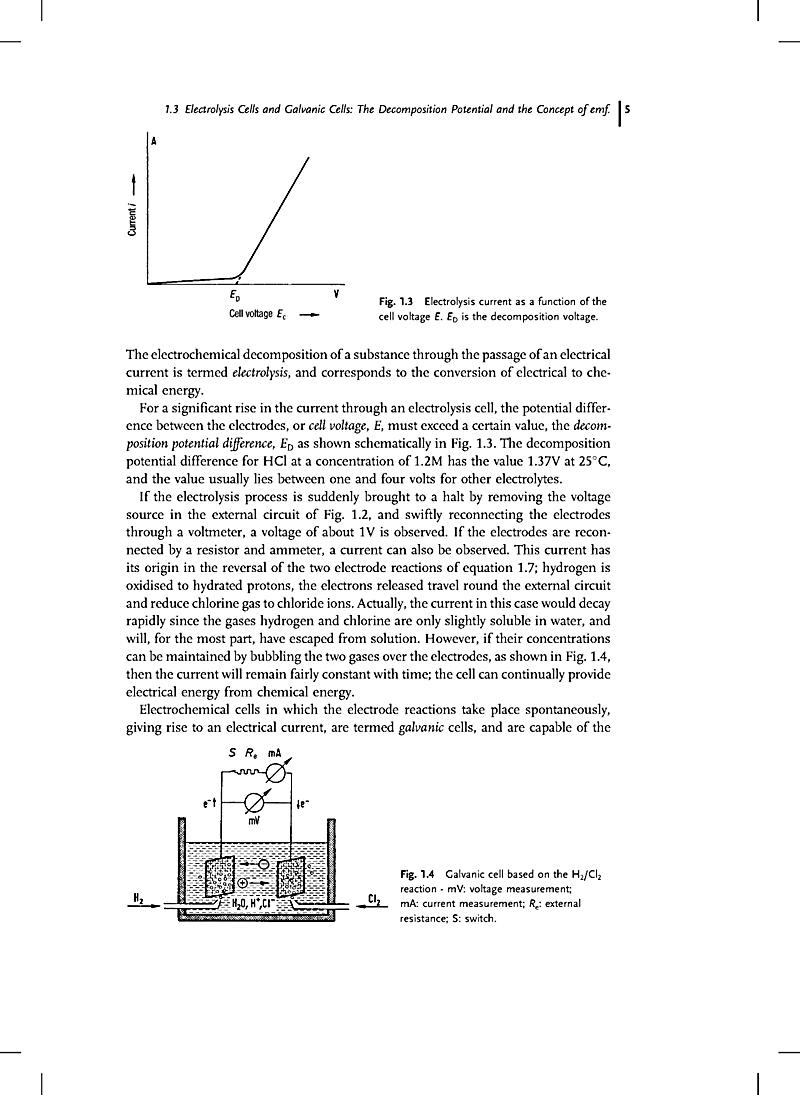2. Edition February 2007
XVIII, 532 Pages, Hardcover
281 Pictures
30 tables
Textbook
Electrochemistry has 1 rating and 0 reviews. Hamann, Andrew Hamnett, Wolf Vielstich. Book Review Electrochemistry by Carl H. The subject of modern electrochemistry. Book Review Chromatographia 2010. It is vital for us that most real concerning Carl H. Electrochemistry carl h hamann andrew hamnett wolf vielstich on amazon com free. Mar 13, 2020 Electrochemistry – Carl H. Hamann, Andrew Hamnett, Wolf Vielstich – Google Books List of Symbols and Units. Sibusiso marked it as to-read May 11, Ravi Sankar marked it as to-read May 24, He has nearly publications in books and scientific journals, covering areas of spectroscopy, quantum theory and electrochemistry.
Short Description
This second, completely updated edition of a didactically skilful and lucid textbook provides a concise introduction to the fundamental principles of modern electrochemistry, with the renowned and experienced scientist authors emphasizing applications in energy technology.
Buy now
Price: 83,90 €

Price incl. VAT, excl. Shipping
This second, completely updated edition of a classic textbook provides a concise introduction to the fundamental principles of modern electrochemistry, with an emphasis on applications in energy technology. The renowned and experienced scientist authors present the material in a didactically skilful and lucid manner.
They cover the physical-chemical fundamentals as well as such modern methods of investigation as spectroelectrochemistry and mass spectrometry, electrochemical analysis and production methods, as well as fuel cells and micro- and nanotechnology.
The result is a must-have for advanced chemistry students as well as those studying chemical engineering, materials science and physics.
Electrical Conductivity and Interionic Interactions
Electrode Potentials and Double-Layer Structure at Phase Boundaries
Electrical Potentials and Electrical Current
Electrochemical Methods for the Study of the Electrode/Electrolyte Interface
Reaction Mechanisms
Industrial Electrochemical Processes
Galvanic Cells
Analytical Applications

Electrochemistry By Carl H Hamann And Sons

Electrochemistry By Carl H Hamann Worksheet
Following his studies in mathematics, physics, biology and economics in Hamburg and Bonn, graduating in 1966 as a physicist, Carl H. Hamann gained his doctorate in 1970, becoming Professor for Applied Physical Chemistry at the University of Oldenburg in 1975. He has since concentrated mainly on fuel cells, electrochemical metrology, passage and adsorption kinetics, turbulent flows, the thermodynamics of irreversible systems, preparative electroorganic chemistry and technical electrochemistry. Professor Hamann has thus far published some 80 articles in journals and books.
Wolf Vielstich:
As Heinz Gerischer's first student, in Göttingen in 1952/53, Wolf Vielstich was concerned with developing a fast Potentiostaten while determining exchange current densities. Upon starting work at the Institute for Physical Chemistry, Bonn University, in 1960 he demonstrated that, apart from mercury, reproducible cyclic voltamograms, such as for the oxidation of hydrogen and methanol, are contained in solid electrodes, including Pt, Ir, Rh, Au and Pd. There then followed experiments with methanol/air and NiMH cells, among others. He was always interested in developing novel methods, such as the rotating ring electrode, on-line MS (DEMS), in-situ FTIRS and UHV analysis of adsorbants. Between 1986 and 1993, Wolf Vielstich was the Coordinator of the first European project to develop a DMFC, and in 1998 he was awarded the Faraday Medal by the Royal Chemical Society. Since 1999 he has been working as a guest of the Universidade de Sao Paulo, and edited Wiley's Handbook of Fuel Cells (2003).
Professor Hamnett graduated from the University of Oxford with a BA (Chemistry) in 1970 and a D.Phil. (Chemistry) in 1973. He has held research and academic positions at the University of British Columbia, Canada, and at Oxford and Newcastle Universities, England, before his appointment in January 2001 as Principal and Vice-chancellor of the University of Strathclyde. He has nearly 200 publications in books and scientific journals, covering areas of spectroscopy, quantum theory and electrochemistry. His primary academic interests in recent years include the development and utilisation of spectro-electrochemical techniques in electrochemistry, and the development of improved fuel cells and solar-energy conversion devices.